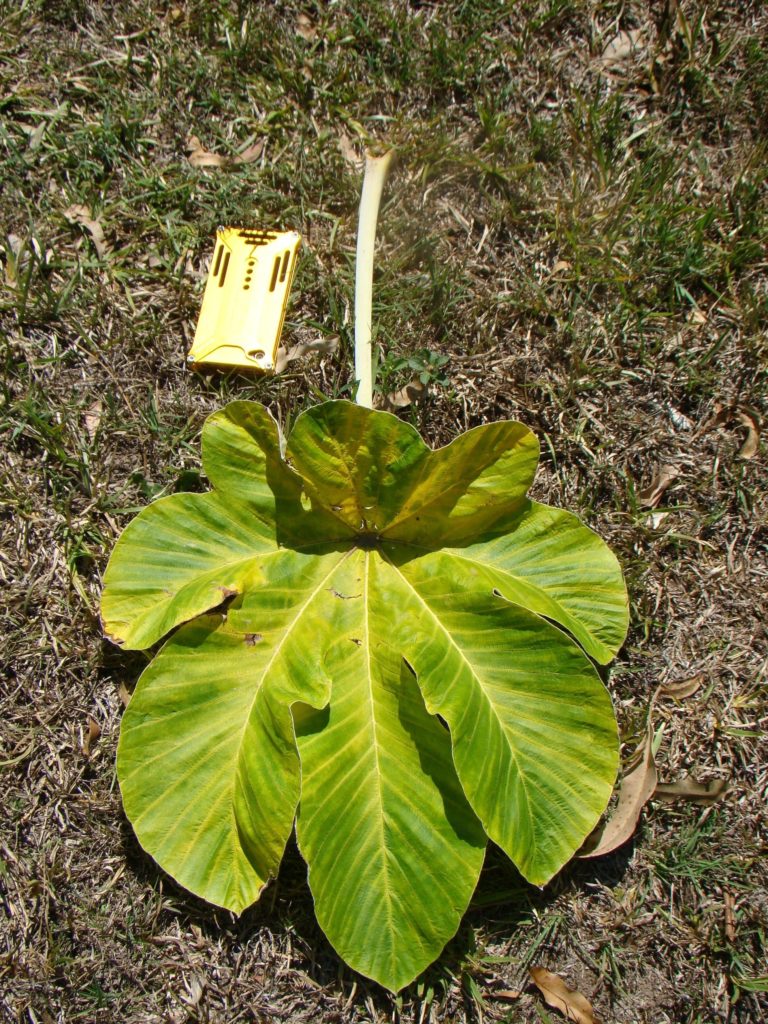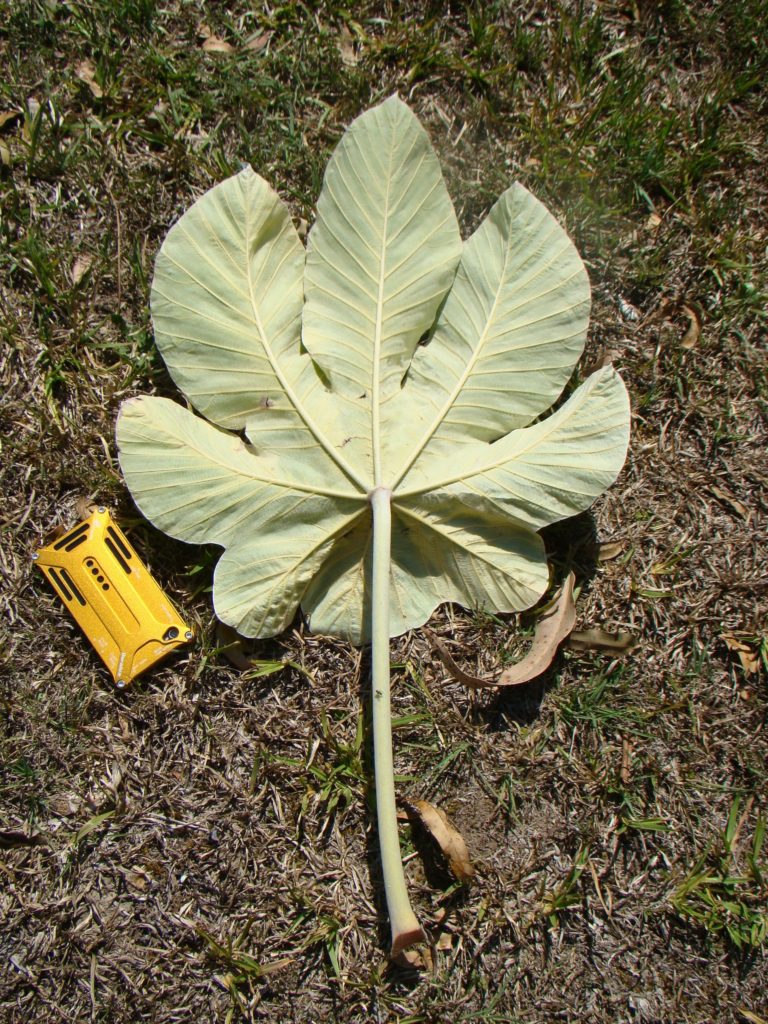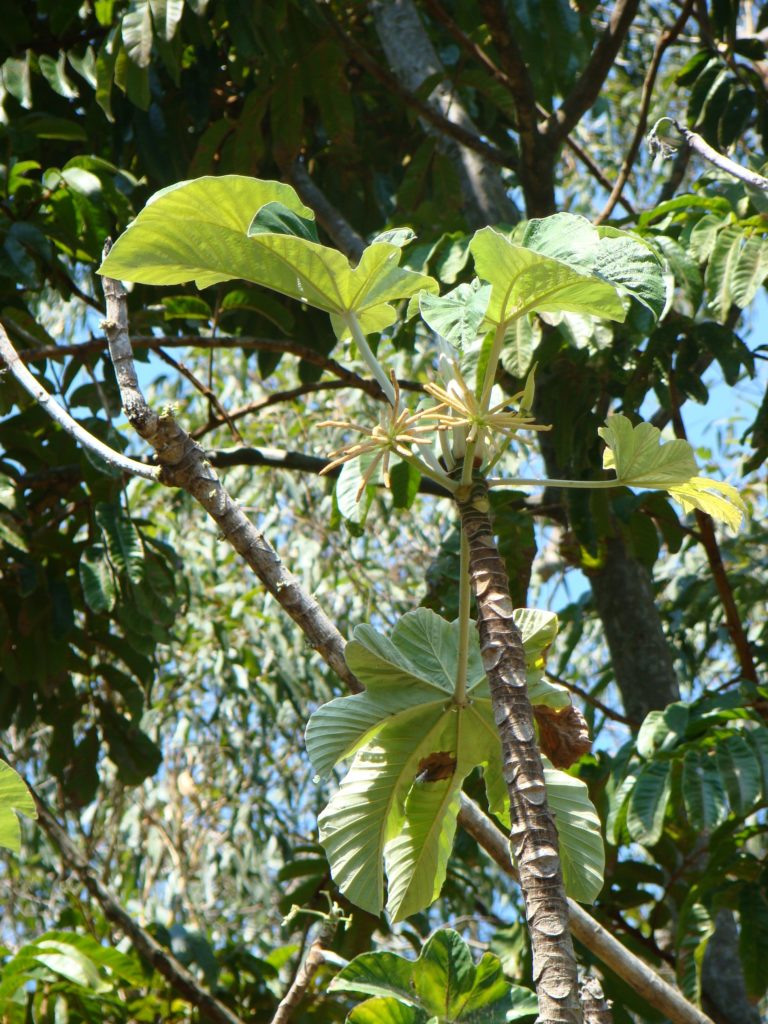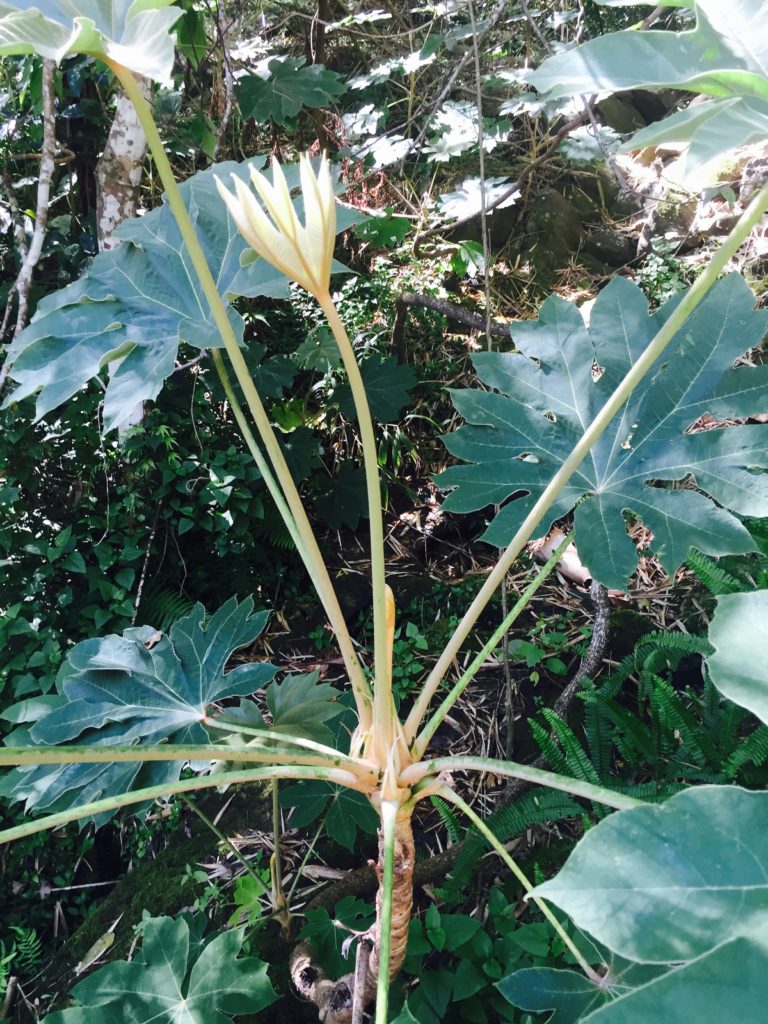Mexican Bean Tree (Cecropia peltata) photos taken by City of Gold Coast Pest Management Officers.
We often think of our Land for Wildlife members as bush regenerators, working tirelessly to reduce our environmental weeds and restore our native habitat, but how often do we consider them as biosecurity agents?
Yet that’s exactly what some of our members are; particularly when they’re at the forefront of identifying and controlling emerging, legislated pests that would otherwise remain undetected.
This has certainly been the case on the Gold Coast with the Mexican Bean Tree (Cecropia peltata and C. palmata). Pest Management Officers detected the first Mexican Bean Tree on the Gold Coast in 2012 and provided advice on its habit and identification to Conservation Partnerships (Land for Wildlife) Officers. Since then, a further 19 trees have been detected in the city, all on private property with 40% of these identified by Conservation Partnerships Officers. This highlights both the value of regular visits by Conservation Partnerships Officers and the important role private landholders, particularly Land for Wildlife members, play in protecting our native wildlife from highly invasive species.


So how did the Mexican Bean Tree end up here, what does it look like and what do you do if you find one? The Mexican Bean Tree is from Central and South America and the West Indies. It made its debut in Queensland via a private plant collector in Mission Beach. Since then, it’s been found in gardens in North Queensland, Sunshine Coast, Brisbane and the Gold Coast.
Mexican Bean Tree prefers wetter habitats, such as riparian zones and rainforests. It is tall with hollow multi-stemmed trunks and very large paw-paw like leaves, the underneath of which are covered in tiny white hairs.
Mexican Bean Trees are dioecious (have separate male and female plants) and can be distinguished by their flowers. Female flowers have a distinctive cluster of 2-6 yellow finger-like spikes, while the males have 15-25 ‘fingers’. The fruit is tiny and each plant is capable of producing millions of seed per plant (argh!), allowing them the potential to become highly invasive.

Only two of the 20 specimens found on the Gold Coast have been saplings, which are thought to have spread from nearby sources by frugivorous (fruit-eating) birds or bats.
The Mexican Bean Tree is considered a ‘restricted invasive plant’ under Queensland’s Biosecurity Act 2014. This Act requires everyone to report sightings of this weed to Biosecurity Queensland (ph. 13 25 23) within 24 hours and plants must not be kept, moved or sold.
Each time Conservation Partnerships Officers detected Mexican Bean Trees, on-site visits with a Pest Management and Biosecurity Queensland Officer were conducted to confirm the tree’s identification and, then later, implement control activities. Please don’t kill a tree before its identification is confirmed as it prevents officers from identifying whether the tree is male or female.

For those of you wondering how on Earth you’re meant to keep up with every emerging weed and what your obligations are under the Biosecurity Act, don’t worry; your Conservation Partnerships Officers can help with that. It’s one of the reasons we encourage you to seek regular property revisits from your local officer.
Whilst the process for detecting and controlling restricted invasive plants might seem daunting, please remember, we’re all in this game for the same reason – we want to protect our native wildlife. As landholders you have the opportunity to stop weeds before they establish (remember, one year’s seed, seven years’ weed!).
If you think you have a Mexican Bean Tree please report it to Biosecurity Queensland and remember, your Conservation Partnerships Officers are here to support you, so always feel welcome to contact us.
References & Further Reading
www.daf.qld.gov.au
www.goldcoast.qld.gov.au/environment/mexican-bean-tree-13508.html
Suburban and Environmental Weeds of south-east Queensland app.
Article by Lexie Webster
Supervising Conservation Officer
City of Gold Coast

Help from Jan Murray, 13-17 Carlton Rd., Greenbank 4124. Having arguments with co person here. Need to join Land for Wildlife and get an id on plant down the backs, I own the property. I thought they were olive oil plant. Either way it has to go. He wants to dig it out. and I want to cut and slice the stump and soak it with poison. Need advice that is compliant with council regulations on toxic plants.
Hi Jan. We would encourage you to contact your local council and ask to speak to their one of the officers in their Land for Wildlife team. They should be able to help you identify the tree, and if it is a weed tree, suggest a way to control/remove it. All the best.